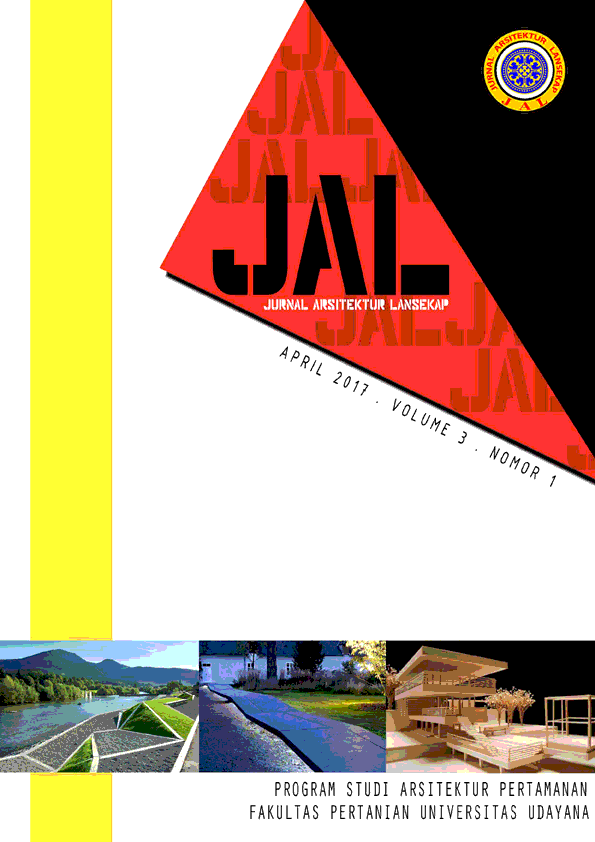Pengaruh Jenis dan Dosis Pupuk ZA, NPK, Urea terhadap Pertumbuhan Rumput Bermuda (Cynodon dactylon) pada Industri Pembibitan Tanaman Lansekap di Kelurahan Kesiman, Kecamatan Denpasar Timur
Abstract
ABSTRACT
Effect of Type and Dose ZA fertilizer, NPK, Urea on Growth Bermuda Grass (Cynodon dactylon) on Industrial Plant Nursery Landscape in Kelurahan Kesiman, Kecamatan Denpasar Timur
Demand of bermuda grass (Cynodon dactylon) for landscaping purposes from 2013 to 2015 continued to increase. This increase requires the availability of seed Bermuda grass (Cynodon dactylon) is enough to meet the needs of the market will demand the grass. This study aimed to determine the effect of the type and dose of fertilizer on the percentage of bermuda grass cover, which is implemented in March 2016 until May 2016, which is located at sedap malam street, Village Kesiman, East Denpasar District. The experimental design used was a randomized block design (RBD) with 12 treatments (N0: Without fertilizer, N1: NPK 200 kg / ha, N2: NPK 250 kg / ha, N3: NPK 300 kg / ha, Z0: Without fertilizer, Z1 : Za 200 kg / ha, Z2: Za 250 kg / ha, Z3: Za 300 kg / ha, U0: Without fertilizer, U1: Urea 200 kg / ha, U2: Urea 250 kg / ha, U3: Urea 300 kg / ha) and each treatment was repeated three times to obtain 36 treatment. The results showed that the treatment of urea to 300 kg / ha yield percentage of grass cover at harvest time (20 days) the fastest.
Keywords: bermuda grass (Cynodon dactylon), type and dose of fertilizer, urea; NPK; and Za, the percentage of closure
Downloads
An author who publishes in the Jurnal Arsitektur Lansekap (JAL) agrees to the following terms:
- Author retains the copyright and grants the journal the right of first publication of the work simultaneously licensed under the Creative Commons Attribution-ShareAlike 4.0 License that allows others to share the work with an acknowledgement of the work's authorship and initial publication in this journal
- Author is able to enter into separate, additional contractual arrangements for the non-exclusive distribution of the journal's published version of the work (e.g., post it to an institutional repository or publish it in a book) with the acknowledgement of its initial publication in this journal.
- Author is permitted and encouraged to post his/her work online (e.g., in institutional repositories or on their website) prior to and during the submission process, as it can lead to productive exchanges, as well as earlier and greater citation of the published work (See The Effect of Open Access).
Read more about the Creative Commons Attribution-ShareAlike 4.0 Licence here: https://creativecommons.org/licenses/by-sa/4.0/.







